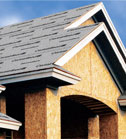Capitol Hill Church in Washington, D.C., is home to a "Christ-centered, God-fearing, spirit-filled" Seventh-day Adventist congregation. Capitol Hill Church's mission is to spread the gospel of Jesus Christ with loving and open hearts. For this congregation, it's not about developing flashy materials, expensive advertising campaigns or an extravagant website. Instead of ministering on the basis of people coming to the church, its approach is to take the ministry to the people. The church wants to be known for its willingness to take the Gospel from within the walls of its building and positively affect the lives of everyone it contacts.
Built in 1909, Capitol Hill Church's roof had received minimal repairs during the past century. When leaks began to interrupt operations and services, the church selected Wagner Roofing Co., Hyattsville, Md., because of the company's 100 years' experience restoring copper roof systems.
From the ground up
Defining the scope of work was difficult because Wagner Roofing had limited access to the dome before scaffolding was erected. This unique job required scaffolding around two radius structures. The church has several gable roofs in the center of which is a dome. And in the center of the dome is a cupola. The gabled roofs are at the four-story level; the dome is above the gabled roofs; and the cupola is at the highest level.
Scaffolding was erected on top of the 6:12 (27-degree) standing-seam tin roof so workers could reach the dome. Another scaffolding deck was constructed on top of the 5:12 (23-degree) dome roof to reach the cupola followed by scaffolding around the cupola. Five-foot-wide decks with netting were installed at the dome's eave to access the built-in gutters on the dome and cupola.
Safety hooks also were installed on the cupola to help workers inspect for leaks and for future access—safety hooks hadn't previously been installed, and the lack of them presented a challenge.
"Because safety hooks never were in place to begin with, the toughest part was getting up there to inspect the dome and cupola before we could start the job," says Sergio Luise, estimator and project manager for Wagner Roofing.
Cupola scope
Once scaffolding was in place, Wagner Roofing found 11 leaks inside the dome's highest point, which is about 60 to 70 feet above the church's nave. Wagner Roofing began a preliminary inspection report but was not sure the obvious problems—loose and flapping pieces of copper and wind-damaged or missing finials—were the only sources of leaks.
"The concern was the church would spend thousands of dollars on a new copper roof system but still have leaks from the windows in the dome," says Chuck Wagner, Wagner Roofing's president. "To reassure the church and ourselves, we obtained approval to do a water test, and we found leaks from the highest point—the cupola. The church agreed to a change order to replace it."
Working on a creation
With scaffolding in place, the tear-off process began. The existing flat-seam copper was removed down to the concrete deck. About 20 percent of the concrete was spalled and needed to be removed by a jack hammer. Structural concrete was used to support and frame the dome. Rubble infill then was installed between the beams, followed by a covering of lightweight concrete.
Because of concerns with vapor drive, as well as denting of copper panels during installation caused by the rough concrete surface, Wagner Roofing consulted with Construction Systems Group Inc., McLean, Va., regarding the waterproofing membrane. An engineer recommended using a waterproofing product similar to the type originally used 100 years ago. Subsequently, Tremco Inc.'s TREMproof® 250GC elastomeric waterproofing membrane was selected and applied over the entire concrete deck.
Concrete deck repairs needed to be performed immediately followed by the waterproofing membrane as soon as the concrete set. Keeping the roof watertight was critical because there is a plaster ceiling 50 feet above the church nave. No leaks were incurred during the demolition, repair and waterproofing processes.
An unexpected sign
Built in 1909, the dome's cornerstone originally was set by President Taft. The existing 4,500 square feet of flat-seam copper had been installed in 18- by 18-inch sections laid in a diagonal pattern. Wagner Roofing proposed to the church and D.C. Historic Preservation the roof system be replaced with typical standing-seam copper panels, which would save considerable money. D.C. Historic Preservation agreed because the panels cannot be seen from the ground. D.C. Historic Preservation also agreed to simplify the intricate copper finials; however, Wagner Roofing believed the finials were an important architectural feature and important to preserving the church's historical relevance in the neighboring area.
"It's a beautiful church," says Kevin Morgan, superintendent for Wagner Roofing. "When we were working on the dome, we could see the U.S. Capitol's dome, Smithsonian and Washington Monument, and it gave us a sense of the history in the area. I love doing something historically correct and making it better."
Demolition of the finials, cupola, cornice and ship's wheel was performed carefully so they could be used as templates for replications. Making patterns to match the ornamental sheet metal was a challenge.
"This was the most difficult part of the job because the radius cornice below the dome roof had an ogee molding (a double curve resembling an S-shape), 16 outside miters and eight inside miters," Wagner says. "Dies were made to match the reveals to a T."
During the demolition process, it was discovered the cupola had sounding holes indicating at one time a bell sat atop it. Wagner Roofing diligently recreated the pieces to restore the bell tower—the copper bell, cladding and base—and flashed them into the copper dome.
"The bell tower was really cool," Morgan says. "It's clear the holes were bell-sounding holes because they are shaped like a horn, and it was neat finding that out. It's something you don't find every day."
The dome's standing-seam roof has a 6:12 (27-degree) slope that reduces to a 2:12 (11-degree) slope. Sixteen-ounce copper manufactured by Revere Copper Products Inc. was used for the standing-seam roof, cornice, finials and ship's wheel. Twenty-ounce copper was used for the flat-seam roof and built-in gutter.
Safety above all
Crews working on the dome were tied to a rope and anchor plates; the dome's built-in gutters and flat-seam cupola were worked on from scaffolding. Full-safety harnesses, Occupational Safety and Health Administration- (OHSA-) compliant anchor plates, lanyards, full-body harnesses, hard hats and gloves were used.
Practicing a firm commitment to safety, Wagner Roofing works with SEE-Inc., Keedysville, Md., a safety, environmental engineering company that inspects all Wagner Roofing jobs as if it were OSHA. Visits are unannounced, and it writes reports referencing OSHA rules and fines if it finds violations.
Hallelujah
Scaffolding erection began in April 2012; roofing work began in May; and the project was completed in November 2012. A six-person crew performed tear-off, a four-person crew handled fabrication and a five-person crew handled installation. Even with the cupola change order, the project was completed ahead of schedule.
Wagner Roofing's dedication and commitment to preserving history has blessed the church with a new bell and another beautiful copper roof system that will shine on its congregation for decades to come.
Chrystine Elle Hanus is Professional Roofing's associate editor and NRCA's director of communications.
Project name: Capitol Hill Church
Project location: Washington, D.C.
Project duration: April 2012–November 2012
Roof system type: Copper
Roofing contractor: Wagner Roofing Co., Hyattsville, Md.
Product manufacturers: Revere Copper Products Inc., Rome, N.Y.; Tremco Inc.,
Beachwood, Ohio



